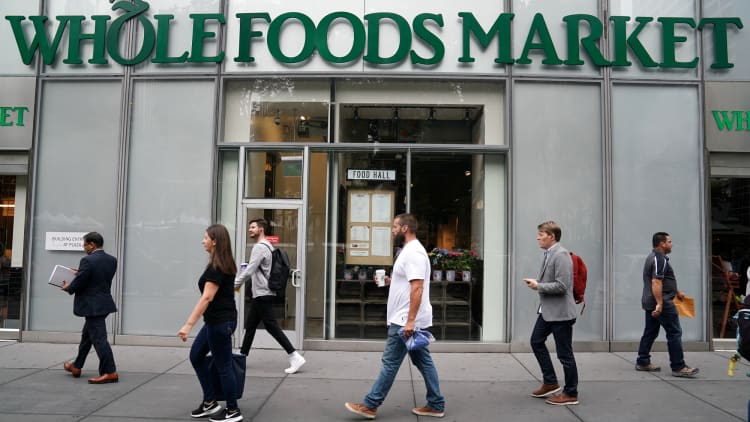
Amazon's plan to acquire Whole Foods will not only change the landscape for retail but also for real estate. The value of the strip mall centers with Whole Foods stores has already shot up, while centers anchored by competing supermarket chains will face pressure.
"We know that's coming, and that's going to be your typical full-service grocer who is already facing challenges in the business," said Phillip Owens of Green Street Advisors.
The roughly 440 Whole Foods centers tend to be located in highly affluent areas, and in all likelihood Amazon would take its e-grocer model to a new level in those stores; Amazon could use them as both delivery hubs and distribution centers. Some speculate there could be drive-through pick-up lanes, or other innovations that would require research and development across the portfolio of stores.
"And so capital expenditures, money being put into those stores to increase the attractiveness of the physical space, is likely to happen in the near term," added Owens, which would only increase the value of the underlying real estate.
Foot traffic would also rise, as shoppers who may have been turned away by Whole Foods' relatively high prices now may see lower prices and could also visit the stores to pick up items purchased on Amazon. All this bodes well for other stores in the Whole Foods center and consequently occupancy and rent in those centers. Competing grocers, and the strip malls they occupy, could see just the opposite.
"You might see a degradation, you might see situations where rent growth stagnates, and at the end of the day that's all happening because the best retailers are likely to desire being near the Whole Foods-oriented center," said Owens.
Some of those centers are owned by publicly traded REITs, which could take a hit if rents and occupancies suffer. Big players there are Regency, ROIC and Weingarten. On the flip side, REITs that own strip centers, like American Assets Trust, could see big gains, according to Owens.
"While Whole Foods Market's corporate challenges were well written about in the national press, they also represent a sought-after REIT tenant given they tend to target upper-income areas whether suburban or urban," noted Alexander Goldfarb, managing director and REIT analyst at Sandler O'Neill. "The REITs have long noted that the Whole Foods Market tends to target suburban and urban markets where upper-income customers tend to live, so it doesn't surprise that Amazon would target a retailer than combines weekly shopping trips with affluence."
Two competitors that a Whole Foods-Amazon deal is unlikely to hurt are ethnic and value-oriented shopping centers. They don't compete for the same customers, and their underlying real estate will likely continue to see strong demand.


